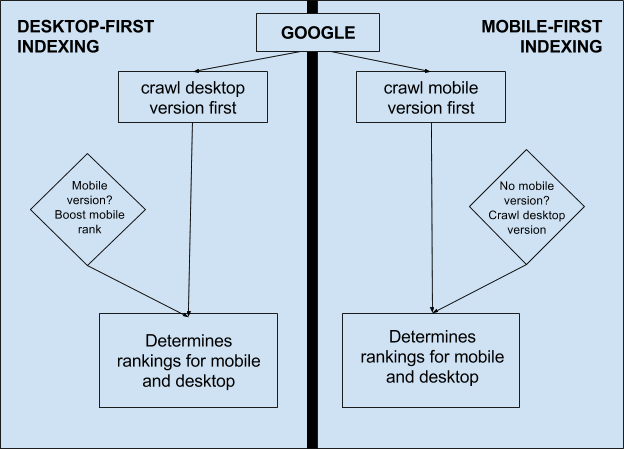o further understand this, we have to know about what we call "Mobile first Indexing".
Moz has explained it very well how Mobile indexing works:
What is “mobile-first indexing”?
Mobile-first indexing is exactly what it sounds like. It just means that the mobile version of your website becomes the starting point for what Google includes in their index, and the baseline for how they determine rankings. If you monitor crawlbot traffic to your site, you may see an increase in traffic from Smartphone Googlebot, and the cached versions of pages will usually be the mobile version of the page.
It’s called “mobile-first” because it’s not a mobile- only index: for instance, if a site doesn’t have a mobile-friendly version, the desktop site can still be included in the index. But the lack of a mobile-friendly experience could impact negatively on the rankings of that site, and a site with a better mobile experience would potentially receive a rankings boost even for searchers on a desktop.
You may also want to think of the phrase “mobile-first” as a reference to the fact that t he mobile version will be considered the primary version of your website. So if your mobile and desktop versions are equivalent — for instance if you’ve optimized your content for mobile, and/or if you use responsive design — this change should (in theory) not have any significant impact in terms of your site’s performance in search results.
Photo credits: https://moz.com/blog/mobile-first-indexing-seoIn other words, If your site is not mobile optimised, it could be. Since more and more people are searching from their smartphones and tablets, Google knows the issues that mobile users can face when searching on their phones. If your site offers a poor user experience to someone on a mobile device, Google will demote your rankings in the smartphone search results.
More information here from Google about complying with "Mobile First Indexing"


